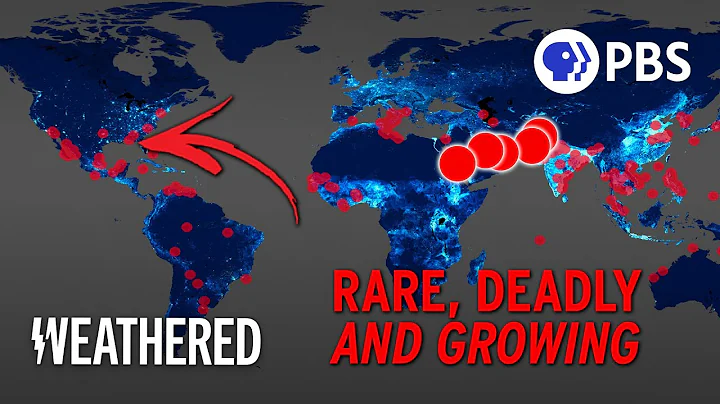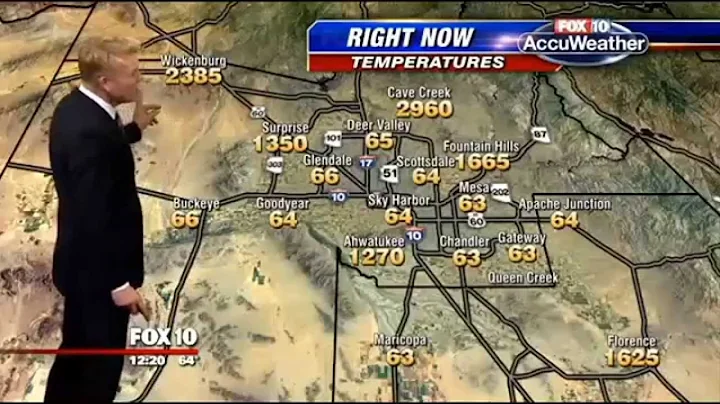
文·Jiang Haoqian
Hungarian -born war photographer Robert Capa (Robert Capa) is famous for shooting "decisive moments". He participated in the Spanish Civil War, the Anti-Japanese War, the European battlefield of World War II, the First Middle East War, and the First Indo-China War. Finally, he was unfortunately hit by a mine in Vietnam and died. From July 1943 to the spring of 1944, he photographed in North Africa and Italy and experienced many legendary stories.
On the eve of being deported to the United States, through luck, personal initiative, and connections, he secured the opportunity to film on the front lines. He was the first photographer to capture the Sicilian airborne operations because he was on board the plane. He hung from a tree during his first parachute jump. After being rescued, he communicated beyond language with an old Sicilian farmer. After the Battle of Sicily, he took a boat to Italy. Although he did not get the opportunity to parachute, he still took wonderful photos while taking pictures with the army on land.
Allied enemy photographer
On the night of July 10, 1943, Capa, a Hungarian-born war photographer, spent the night in a tree in Sicily, Italy (Sicily). This was the second time in his life that he participated in a parachute mission. The last time was on the night of July 9. However, the first time he did not parachute. He only used a camera to photograph the soldiers of the 82nd Airborne Division on the aircraft.

Matthew Ridgway (Matthew Ridgway), then commander of the 82nd Airborne Division and later commander-in-chief of the United Nations forces in the Korean battlefield, commented briefly: "That is not very common."
Ridgway said: Capa's arrival was welcome because the photographer originally scheduled to accompany the army had a gastrointestinal illness and was unable to perform the mission. Coincidentally, Capa, who was about to be deported back to the United States, met this poor man in the toilet, so he contacted him through Chris Scott, a friend he met in London and the public relations officer of the 9th Airlift Command at the time. The introduction led to Li Qiwei’s relationship.
The 9th Airlift Command is responsible for transporting Allied airborne troops, including the 82nd Airborne Division attacking Sicily. Capa himself used the word "miracle" to describe this opportunity that was brought about by a combination of personal initiative, personal connections, the scarcity of war photographers, and sheer luck. This kind of miracle appears throughout the book "Miracles".
The aircraft Capa flew on was most likely a WACO CG-4 glider, manufactured by the American Waco Aircraft Company. The total delivery volume of this type of glider during World War II reached more than 13,900, and it participated in many operations in the Sicilian airborne operations, the Normandy landing, and the China-Burma-India battlefield. The rated crew of the CG-4 is 15 soldiers, but the one Capa flew on July 9 carried a total of 18 soldiers, including Capa himself, 19 people.
The paratroopers were sitting on both sides of the cabin, and they basically took a nap while the glider was flying over the Mediterranean Sea. When the green light at the front of the cabin lights up, it means the soldiers should be ready. When the red light comes on, they move to the hatch at the rear of the aircraft and jump out. Capa himself sat at the front of the cabin and could photograph the paratroopers jumping out of the hatch and falling.
He was not satisfied with his results. In Capa's own words: "They are all slightly out of focus, overexposed, and the composition is not artistic at all."
"Slightly out of focus" is the direct source of the title of the book, and the title of the other Chinese translation seems to be more Accurate, and more interesting: the focus is not quite right. This is the only place in the book "Out of Focus" where the word "out of focus" is mentioned, although the book also includes several out of focus photos, the most prominent of which is Capa's first follow-up during the Normandy landings. Two pictures taken when the attacking troops landed on Omaha Beach (pp. 186-189). The reason why
is out of focus is easy to understand. Before Capa arrived over the target area of Sicily , Allied bombers had already conducted an air raid there. The other side of fire preparation is to alert the enemy. Capa saw tracer bullets of various colors extending from the ground to the sky. In order to avoid the gunfire, the cabin was dark, and the pilots were constantly maneuvering to avoid bullets.
Since the only light sources Capa can rely on are tracer bullets and point light sources on the ground (burning oil depots and houses), the relative motion of to the shooting object (paratroopers and ground targets) is faster, and the relative motion of between potential shooting targets is The distance is relatively large, so it is difficult to determine the appropriate focus plane. For example, when Capa's eyes captured the scene of a paratrooper about to open his parachute and a burning oil depot on the ground in the same frame, he first needed to choose his subject. Obviously, there must be a considerable unknown distance between the paratroopers and the oil depot. There is only one choice between the two. If he had hesitated a little, Capa might have set his focus on the space between the paratroopers and the oil depot, so he got a picture A severely out-of-focus photo with two large light spots.
If Capa's hand speed and decision-making speed were fast enough, he correctly selected the focus plane suitable for the paratroopers, but just to avoid a string of tracer bullets, the CG-4 pilot suddenly turned, so Capa's carefully selected focus plane was inaccurate. , the result - another big light spot. Overexposure is probably caused by turning on the flash too much, which results in a whitened image.
In addition, motion blur is definitely an unsolvable problem that Capa has always faced. Under such challenging conditions, composition was naturally a luxury. But Capa was, after all, the first photojournalist to report on the airborne operations in Sicily, so when he returned to his base in North Africa, "as the only person with first-hand information, I immediately became the center of attention."
Even though the photo itself was not satisfactory, Capa was disappointed by this random shot. He was born in Budapest, the capital of Hungary, and came to New York to find work at the beginning of World War II. After Hungary joined the Axis powers in November 1940, Capa became an "enemy alien" without a clear nationality.
He came to Europe as a war photographer commissioned by the American illustrated magazine "Collier's" and sent to England. The wonderful process of his coming to North Africa and Italy as an enemy alien will not be described here. What I want to point out is that on the eve of taking a flight from England to North Africa, "Collier" sent a letter recalling him to the United States. Although he managed to make it to North Africa and board a glider for Sicily, Capa was certain to be sent back to the United States as soon as word of "Collier" reached the North African front. It was in order to avoid such a prospect that
recommended himself to Li Qiwei to replace the photographer who was unable to take pictures due to illness, hoping to take some good photos and attract the favor of his new employer. However, just as Capa was recounting the details of what he saw and heard to "old reporters", Chris sent him a piece of bad news, which read: "Collier magazine informed Algiers Public Relations Robert Capa no longer worked for them. He was ordered to take the earliest transport back to Algiers. "
Capa felt like a sap. But Chris immediately proposed that Capa could participate in the second airborne operation on the evening of July 10, and shoot it by parachuting to the ground, so that "no one will find you for weeks." Thus, the scene at the beginning of this section happened.
When the Sicilian fellow and the four-man team
Capa hung on the tree, the large troops had already landed. Starting at 2:45 a.m. on July 10, the Allied forces landed on 26 major beachheads 170 kilometers east and south of Sicily. Therefore, Capa felt "countless bullets flying around me" in the tree and was too frightened to call out for help.
Although this was Capa's second airborne operation, his parachuting skills did not improve significantly. According to what he said in "Out of Focus": "About skydiving, I only know that I have to step out of the door with my left foot, and then silently count 1000...2000...3000. If the parachute does not open, I have to tighten the parachute. Pulling the rope... When it was my turn, I stepped into the darkness ahead with my left foot. At that time, I was still in a daze. I didn't count the thousand or two thousand, but shouted: 'Fired photographer. Coming. '... In less than a minute, I landed on a tree in the middle of the forest."
Judging from the final result, Capa's luck was good. Strong winds diverted large numbers of paratroopers from their intended targets. As of July 14, half of the U.S. paratroopers had failed to arrive at the scheduled assembly point.The situation of the British paratroopers was not much better. During the operation on July 9, the British army used 147 gliders, of which only 12 reached the scheduled location, 69 crashed into the sea, and more than 200 soldiers drowned. Major General George F. Hopkinson, commander of the British 1st Airborne Division, held onto the wreckage of the plane and drifted in the sea for several hours before he was finally rescued by a landing ship .

Sicily, Troyna, August 6, 1943, the US military bombed the German stronghold on the top of the mountain for a week. The US military reconnaissance force that first entered the town found some Italian civilians trapped inside.
Three American paratroopers rescued Capa, and the four formed a separated team. Capa tells the Sicilian adventures of four people. In order to avoid attracting the enemy's attention, they can only walk between trees in the forest. A farmhouse outside the forest caught their sight, and an old Sicilian farmer opened the door to Capa. Capa didn't understand Italian at all, but he himself had been photographing the Spanish Civil War from 1936 to 1939, so he knew some Spanish .
According to data from the linguistic website "Ethnologue", the vocabulary similarity between Spanish and Italian is 82%. This means that in a standardized vocabulary, 82% of Spanish words can find an Italian word with similar pronunciation and meaning. Although the two languages are so similar, the bridge between the old Sicilian farmer and the squad of four is made of other materials.
First of all, perhaps because his great-grandfather was a Sicilian, Capa had some features of the Mediterranean race, which made the old farmer hold him and shout: "Sicilian, Sicilian!" Secondly, the old farmer kept repeating "Brook-a -leen" should sound similar to "Brooklyn", which is Brooklyn, New York, USA, and there happens to be an American soldier who is Brooklyn. Finally, and perhaps the most important point: "We explained that Americans like Sicilians, Sicilians also like Americans; Americans hate Germans, and Sicilians also hate Germans."
Through the map carried by the four people, the old farmer told They pointed out that the German troops had moved towards the interior of the island and that there should be no German troops around. Finally, the old farmer gave them food and drink, and the four of them returned to the forest to take shelter. Three days later, the vanguard of the U.S. 1st Infantry Division , commonly known as the "Big Red 1st Division", encountered them, and then they began to march with the large army.
From a photography point of view, Capa gained less from this adventure than the night before. There was only a portrait of the old Sicilian farmer who showed them the way. However, this photo is not the old farmer’s guide on page 105, which took place during the Battle of Troina from July 31 to August 6.
Troy is a small town in the north of central Sicily. The German army built a large number of fortifications and firepower points based on the rolling hills. After following the large army, Capa took many excellent photos, such as the scene where the Italian people welcomed the Allies outside Palermo, the capital of Sicily (pages 98, 100-101); from the corners of the mouth to the ears The scarred Italian commander in Palermo surrenders to American General Geoffrey Keyes; the American soldier puts his arms around an Italian woman (perhaps a girlfriend?) while enjoying the shoe-shining service of an old Italian man (No. Page 102)...
In Palermo, an American soldier Capato met in North Africa handed the film to the American "Life" magazine. Soon Capa became a war photographer hired by Life and published lengthy reports about his experiences in Sicily. More importantly, he finally has a legal and stable identity and can continue to work on the front line.
The second parachute jump that had been waited for 19 months
The Battle of Sicily ended quickly. On July 22, the Allied forces entered Palermo. Capa made a temporary guest appearance as a translator at the Governor's Palace, using French to communicate between General Keyes and the Italian Army Commander. However, he did not stay in the city for long.Soon, he would follow the 16th U.S. Infantry Regiment to attack Troy. This was Capa's "first time following an attack from beginning to end."
Capa is famous for photographing "decisive moments". During the Spanish Civil War, he photographed the masterpiece "The Fallen Soldier" that was suspected of being staged. But among the hills of Troina, he only took a few "simple" and "good photos" that "show how boring and mundane war can be."
In the photo on page 107, a man smoking a cigarette is holding a girl. The girl has her head tilted, her clothes are in tatters, and she is wrapped in gauze from the sole of her left foot to her knee. In the room behind, there was an adult woman with melancholy eyes looking out. There were originally two posters on the wall next to them, but they have now been torn off. This scene is in sharp contrast to the outskirts of Palermo, where the people are wholeheartedly welcoming, full of vitality, and everything is in full swing. Maybe this is the difference between those who have suffered from war and those who have not, even though they live on the same island, even though they may have shouted the same slogan of "Duce!" (Leader!) not long ago.

A foxhole outside the outpost battlefield in September 1943 at Woods Pass, the highest point on the Sorrento Peninsula.
Troy was destroyed by artillery fire, and the German army left behind dead and wounded Italian civilians before retreating. The soldiers and Capa only felt tired and sick. Even the news that "Life" decided to hire Capa made him unhappy. In his words: "I feel that my status as an enemy alien without a job in Troy is a more real part of this war. The special war correspondent of "Life" magazine may never be able to compare with him."
html August, Capa and a large number of reporters returned to Algiers (Alger), the headquarters of the Allied Forces in North Africa. There, communications director Joe Phillips called reporters into the room one by one to assign them tasks. When it was Capa's turn, Phillips said: "Capa, I believe you are a born paratrooper."For a man who has only jumped once and hung on a tree, it is difficult to say whether this is sincere. praise. The PR office probably just wanted to send him to film with the airborne troops again. A few hours later, the reporters set off for the Kairouan air base, about 800 kilometers east of Algiers.
However, the anticipated parachute operation has been delayed repeatedly. After waiting in vain for several days under the scorching sun, Capa took a transport ship to Licata, Sicily. On September 8, just as he was getting ready to land, General Ridgway told him about the armistice in Italy and said that Marshal Pietro Badoglio, who succeeded Mussolini as the Italian Prime Minister, had done so. A guarantee was issued, saying that the German troops would be expelled from Rome to facilitate the landing of Allied planes at the Rome Airport.
Of course, we know that the German army surrounded Rome on the day Badoglio announced the armistice declaration. In the early morning of September 9, the Prime Minister, the King and others hurriedly escaped from Rome. This means that whether he is skydiving or flying, Capa, who takes off his skydiving suit and puts on pink pants, will not be able to reach Rome for a while. The war in Italy lasted until 1945.
Capa experienced greater and more brutal fighting in Italy than at Troy before returning to London in the spring of 1944. On Mount Pantano in southern Italy, he witnessed foxholes every four or five meters, each containing at least one body. In Naples, the largest city in southern Italy, he photographed the central post office that was destroyed by heavy bombs left by the Germans.
As for Capa's second parachute operation, it had to wait until "Operation Trophy" on March 23, 1945. The target of the operation was the German defense line on the other side of the Rhine . This time, Capa learned to count 1,000, 2,000, and 3,000 before jumping out of the plane.





















